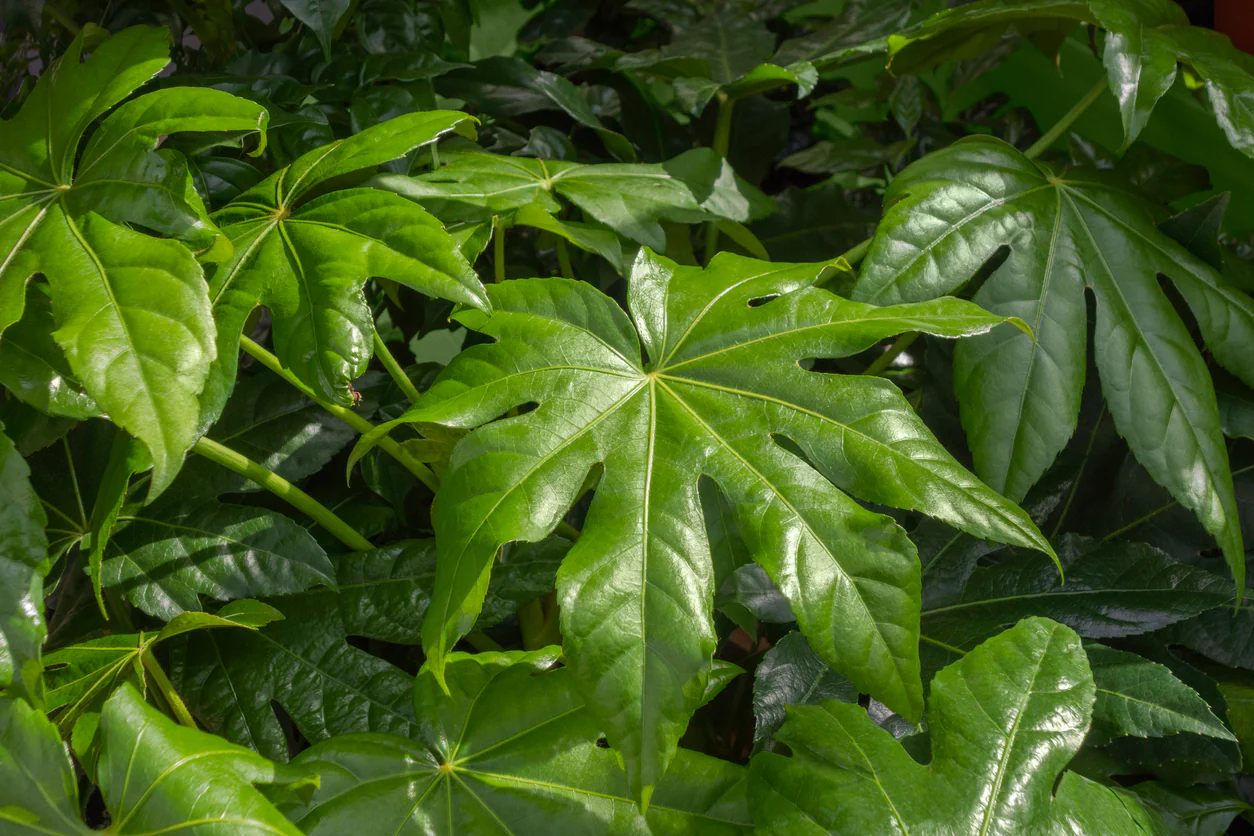
Fatsia, scientifically known as Fatsia japonica, is a captivating plant that has captured the attention of plant enthusiasts all over the world. With its lush and glossy leaves, Fatsia adds a touch of exotic beauty to any indoor or outdoor space. But there is more to this plant than meets the eye. In this article, we will delve into the fascinating world of Fatsia and uncover 11 intriguing facts that will leave you amazed and wanting to learn more. From its origins in Japan to its medicinal properties, Fatsia is a plant that holds many secrets waiting to be discovered. So, grab a cup of tea, sit back, and prepare to be captivated by the wonders of Fatsia!
Key Takeaways:
- Fatsia, also known as Fatsia japonica, is a versatile and low-maintenance plant native to Japan, with large glossy leaves and medicinal uses in traditional Japanese medicine.
- With its adaptability, deer resistance, and ease of propagation, Fatsia is a captivating addition to any garden or indoor space, offering year-round beauty and potential medicinal benefits.
Fatsia is native to Japan
Originating from the dense forests of Japan, Fatsia thrives in the temperate climate and moist conditions of its natural habitat. It was first introduced to the Western world in the 19th century and has since gained immense popularity for its ornamental value.
It is an evergreen shrub
Fatsia is an evergreen shrub, which means it retains its lush green foliage throughout the year. This makes it an excellent choice for adding year-round beauty to your garden or indoor space.
Fatsia is highly adaptable
One of the remarkable characteristics of Fatsia is its adaptability. It can thrive in a variety of conditions, from full sun to partial shade. This versatility makes it an ideal plant for both indoor and outdoor settings.
The leaves are large and glossy
The leaves of Fatsia are eye-catching, with their large size and glossy texture. They can measure up to 12 inches in diameter, providing a dramatic display of greenery wherever they are planted.
Fatsia produces small white flowers
While Fatsia is primarily grown for its foliage, it also produces small white flowers in late summer or early fall. These flowers add an extra touch of beauty to the already stunning plant.
It is commonly known as “Japanese Aralia”
Fatsia is often referred to as “Japanese Aralia” due to its origin and resemblance to the Aralia plant genus. However, it is worth noting that Fatsia is a distinct species on its own.
Fatsia is low-maintenance
For those seeking a plant that requires minimal care and attention, Fatsia is the perfect choice. It is known for its resilience and ability to withstand neglect, making it an ideal option for busy gardeners.
Fatsia can tolerate a wide range of soil types
Whether your soil is sandy, loamy, or clayey, Fatsia can thrive in various soil conditions. However, well-draining soil is essential to prevent waterlogging and root rot.
It is deer-resistant
If you live in an area with deer populations, Fatsia can provide relief from the frustration of deer munching on your plants. The plant’s foliage is usually unappealing to deer, making it a reliable choice for deer-prone regions.
Fatsia can be propagated easily
Want to expand your Fatsia collection? You’ll be delighted to know that propagating Fatsia is relatively simple. It can be done through stem cuttings or by dividing the plant at the root.
Fatsia has medicinal uses
In traditional Japanese medicine, various parts of the Fatsia plant have been used for their medicinal properties. The leaves and roots are believed to have anti-inflammatory and pain-relieving effects when prepared as herbal remedies.
There you have it, 11 intriguing facts that make Fatsia a captivating plant. Whether you’re drawn to its glossy leaves, its adaptability, or its low-maintenance nature, Fatsia is undoubtedly a worthy addition to any plant enthusiast’s collection. So, why not consider adding this remarkable plant to your garden or indoor space?
Conclusion
Fatsia, also known as Fatsia japonica, is a fascinating and versatile plant that has captivated gardeners and plant enthusiasts alike. With its bold foliage, resilience, and ability to thrive in various conditions, Fatsia has gained popularity as an ornamental plant in gardens and indoor spaces.
In this article, we explored 11 intriguing facts about Fatsia, including its origin, characteristics, and benefits. We learned about its natural habitat in Japan and its ability to adapt to different climates. We also discovered how Fatsia can enhance the visual appeal of gardens, purify the air, and even contribute to our well-being through its therapeutic properties.
Whether you’re a plant lover looking to add some greenery to your space or a gardener seeking a low-maintenance and visually striking plant, Fatsia is definitely worth considering. Its unique features and hardiness make it an excellent choice for both indoor and outdoor settings.
So why not embark on a botanical adventure with Fatsia and experience the wonder it can bring to your surroundings? With the right care and appreciation, Fatsia is sure to thrive and become a beloved addition to your plant collection.
FAQs
Q: How tall does a Fatsia plant grow?
A: Fatsia plants can grow anywhere between 3 to 10 feet tall, depending on the variety and growing conditions. They have a compact growth habit, making them suitable for both small and large spaces.
Q: Does Fatsia require a lot of sunlight?
A: While Fatsia can tolerate low light conditions, it prefers bright, indirect sunlight. It is best to place it near a window where it can receive bright, filtered light throughout the day.
Q: How often should I water my Fatsia plant?
A: Fatsia plants prefer consistently moist soil. Water them when the top inch of soil feels dry, and make sure not to overwater to avoid root rot. It’s always a good idea to check the moisture level using your finger before watering.
Q: Can Fatsia be grown indoors?
A: Yes, Fatsia is well-suited for indoor cultivation. Its ability to tolerate low light conditions makes it a popular choice for indoor spaces. Just ensure that it receives adequate light and that the indoor environment has good air circulation.
Q: How do I propagate Fatsia?
A: Fatsia can be propagated through stem cuttings or by dividing the plant. Stem cuttings should be taken in spring or summer and rooted in moist soil. To divide the plant, carefully separate the root ball into smaller sections and replant them in individual pots.
Fatsia's captivating qualities make this versatile plant a true gem in any garden or home. From its glossy, hand-shaped leaves to its adaptability and low-maintenance nature, Fatsia japonica continues to intrigue plant enthusiasts worldwide. Delving deeper into the world of Fatsia, you'll find even more surprising facts about this Japanese native, as well as its medicinal uses and propagation techniques. Whether you're a seasoned gardener or a curious novice, exploring the fascinating world of Fatsia is sure to ignite your passion for this remarkable plant.
Was this page helpful?
Our commitment to delivering trustworthy and engaging content is at the heart of what we do. Each fact on our site is contributed by real users like you, bringing a wealth of diverse insights and information. To ensure the highest standards of accuracy and reliability, our dedicated editors meticulously review each submission. This process guarantees that the facts we share are not only fascinating but also credible. Trust in our commitment to quality and authenticity as you explore and learn with us.


